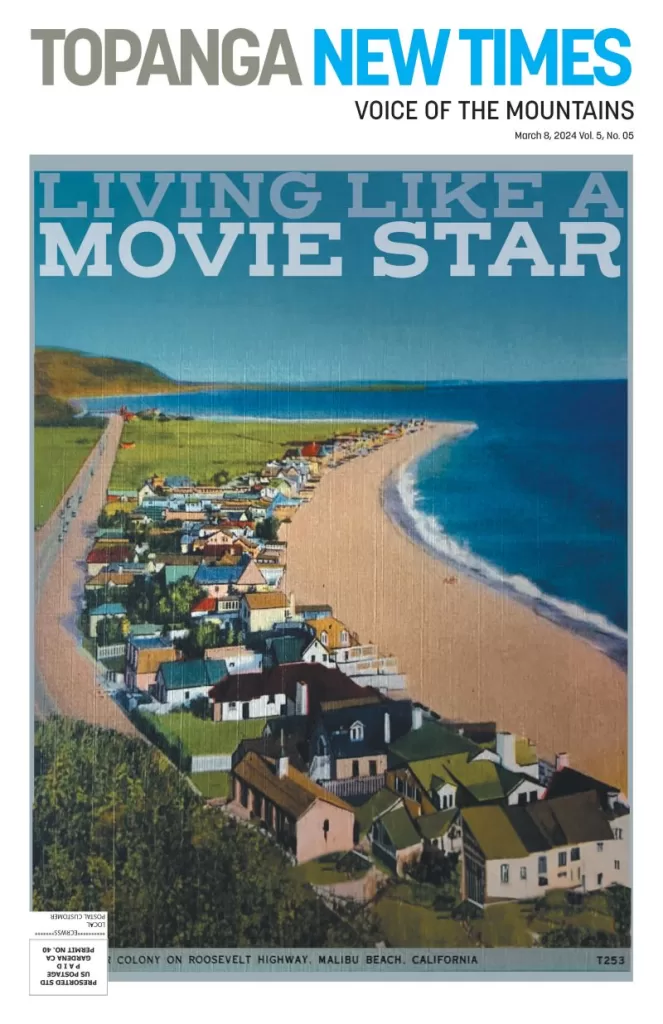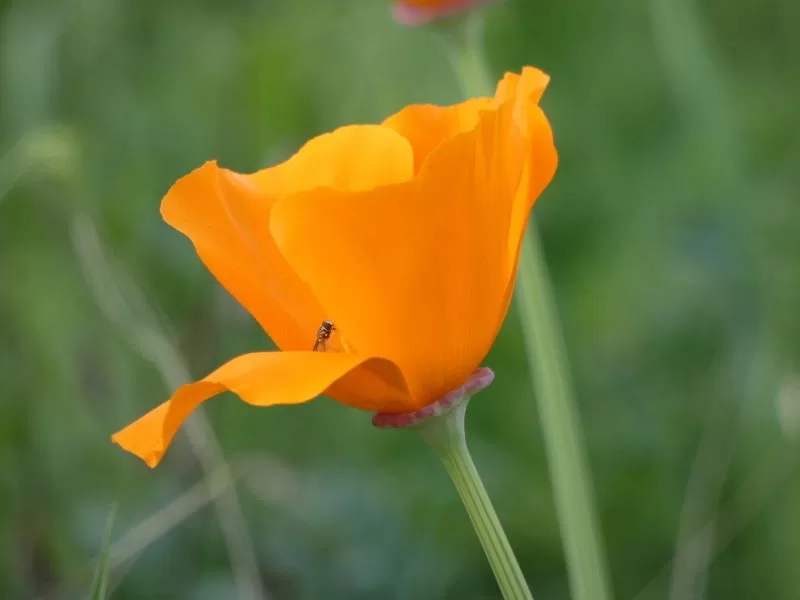
The Malibu Colony was the hot place to be in the late 1920s when the original row of bungalows was first built on the beach in Malibu. This is a story full of silent era film stars, flappers, rum runners, colorful characters. and wild parties. This vintage postcard paints the picture in a rosy light, but what was it really like? Join us for a look at life in Malibu c. 1928. Cover concept and design by Urs Baur.
The first California poppies are in bloom in the Santa Monica Mountains and there is the promise of abundant wildflowers to come as the weather warms up. Down in Anza Borrego State Park a carpet of desert verbena is already in bloom, and conditions show every sign of blossoming into a super bloom in the low desert, but out at the Antelope Valley Poppy Preserve the prediction is for a less than stellar bloom—sometimes it’s not how much rain falls, but when it arrives. Here in the Santa Monica Mountains it’s still soon to tell if the rains came at exactly the right time to generate a super bloom, but it’s already a great year for ceanothus and that one lone poppy spotted by the side of the road promises much more to come.
The California Department of Fish and Wildlife recently revealed the existence of two new wolf packs in Northern California. It’s an important new milestone for wolves in the state. The new Beyem Seyo Pack in Plumas County and the Harvey Pack in Lassen County were identified last year but just received official names. Official names indicate these are residents of our state, not just visitors.
There is growing evidence that wolves, a keystone species hunted to extinction in this state a hundred and fifty years ago, can have an important role in fire recovery, helping to balance the post-fire ecology by preying on animals attracted to resprouting vegetation. An article in the November 2023 Scientific American boldly states that the wildfire brought the wolves back to California. It makes one wonder what else we don’t know about this remarkable species, a species that is still uncomfortably close to extinction.
It’s unlikely that wolves will make a home in the mountains of Los Angeles County, but their presence in our state is important, and the fact that these amazing animals are finding their own way back to California after being extirpated for generations, is inspiring. Finding ways to protect them and insure their continued survival is critically important.
The return of the wolves highlights the importance of protecting open space and wildlife connectivity, so animals like wolves can disperse and safely move through their range.
To the surprise of absolutely no one, a new study funded by the Center for Biological Diversity has found that urban sprawl is a leading cause of habitat loss and fragmentation. The report, released on March 4, finds that tract developments continue to intrude deeper into the urban wildland interface, where this type of wholesale development escalates the extinction crisis by fragmenting and eliminating habitat, increases wildfire risk, places unsustainable pressure on increasingly limited water supplies, and degrades air quality.

“Policymakers need to invest public resources in preserving, improving and expanding access to existing communities, not approving new and destructive sprawl development,” the report concludes.
Topanga residents have repeatedly fought to keep this type of urban sprawl out of the canyon, but it remains an active concern throughout other parts of the Los Angeles wildland interface, including at the far north end of Topanga Canyon Blvd., where development continues to push deeper into the mountains, transforming habitat into yet another extension of San Fernando Valley sprawl. On a clear winter day looking out over the valley from the top of Topanga one receives a visual reminder of the fate these mountains escaped, but also of the one currently faced in other places not far away from here.
We’re sharing a different real estate development story in this issue of Topanga New Times, one from the roaring 1920s that chronicles the creation of the Malibu Movie Colony and features flappers, rum runners, silent era film stars and filmmakers. Also in this issue, Claire Fordham talks with a young Topanga artist whose journey here began in Russia, for her newest Transplants feature; Jimmy P. Morgan shares his new-found love for the writing of Stephen King; new TNT contributor John Wood reviews a stellar album by jazz artist Marla Lewis; and the Coastwatchers are back for chapter 18 of our original fiction serial. Please join us.
It’s March in the Santa Monica Mountains. The sun is shining, the first poppies are in bloom. It may rain again tomorrow or the sky may fall, but today, at least, things could be worse.
Stay safe, be well!





